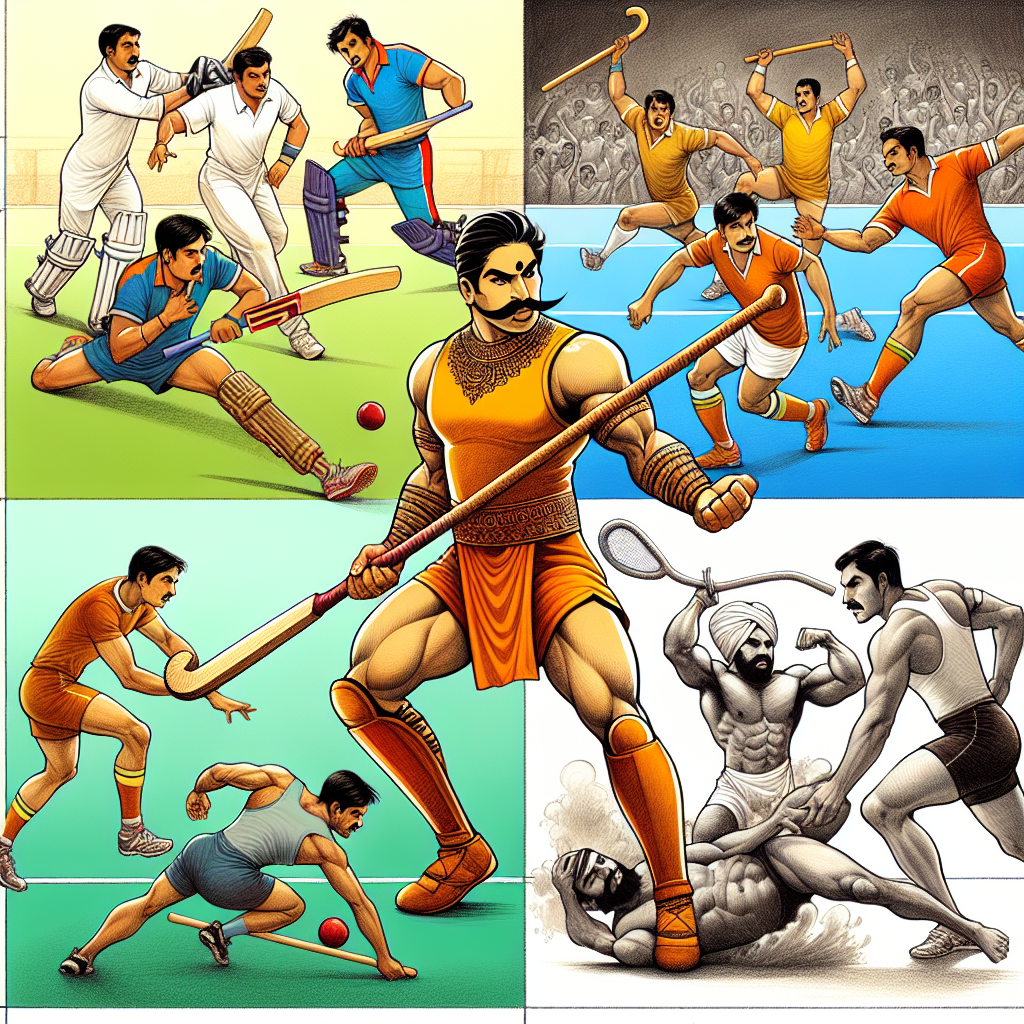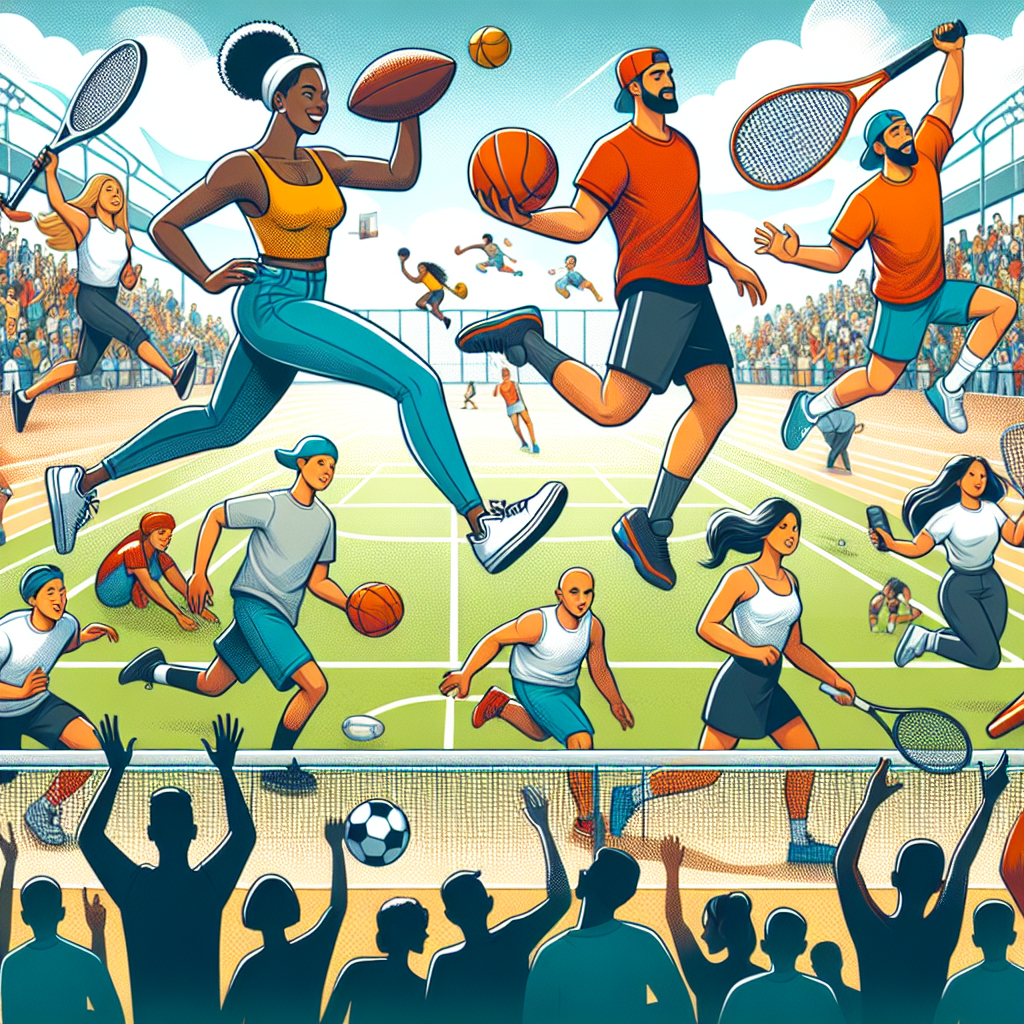India’s Famous Sports: A Deep Dive into the Nation’s Athletic Heritage

India, a country with a rich tapestry of culture and history, is also a land where sports play a significant role in the social and cultural fabric. From traditional games that have been played for centuries to modern sports that have gained international acclaim, India’s sporting landscape is as diverse as its people. This article explores some of the most famous sports in India, delving into their history, significance, and the impact they have had on the nation.
Cricket: The Unquestionable King of Indian Sports
Cricket is more than just a sport in India; it is a religion that unites millions across the country. The passion for cricket in India is unparalleled, with the sport enjoying a fan base that spans all ages and demographics.
History and Evolution
Cricket was introduced to India by the British during the colonial period. The first recorded cricket match in India took place in 1721, and the sport quickly gained popularity among the local population. The formation of the Board of Control for Cricket in India (BCCI) in 1928 marked a significant milestone in the sport’s development in the country.
Achievements and Milestones
- India won its first Cricket World Cup in 1983 under the captaincy of Kapil Dev, a victory that transformed the sport’s landscape in the country.
- The Indian Premier League (IPL), launched in 2008, has become one of the most lucrative and popular cricket leagues globally, attracting top talent from around the world.
- India’s national team has consistently been ranked among the top teams in international cricket, with notable players like Sachin Tendulkar, Virat Kohli, and MS Dhoni becoming global icons.
Field Hockey: The Golden Era and Beyond
Field hockey holds a special place in India’s sporting history, having been the country’s national sport for many years. India’s dominance in field hockey during the early to mid-20th century is legendary.
Historical Significance
India’s field hockey team won its first Olympic gold medal in 1928, and the team went on to win six consecutive gold medals from 1928 to 1956. This period is often referred to as the “Golden Era” of Indian hockey.
Challenges and Revival
Despite its early success, Indian hockey faced challenges in the latter half of the 20th century, with increased competition from other countries. However, recent efforts to revive the sport have shown promise, with the Indian men’s team winning a bronze medal at the Tokyo 2020 Olympics, marking a significant comeback.
Badminton: Rising Stars and Global Recognition
Badminton has seen a surge in popularity in India over the past few decades, with Indian players making their mark on the international stage.
Key Players and Achievements
- Pullela Gopichand, a former All England Open Badminton Champion, has been instrumental in nurturing young talent through his academy.
- Players like Saina Nehwal, PV Sindhu, and Kidambi Srikanth have achieved significant success, with Sindhu winning a silver medal at the Rio 2016 Olympics and a bronze at Tokyo 2020.
Impact on Youth and Infrastructure
The success of Indian badminton players has inspired a new generation of athletes, leading to increased investment in infrastructure and training facilities across the country. The sport’s growing popularity is evident in the number of young players taking up badminton as a professional career.
Kabaddi: A Traditional Sport with Modern Appeal
Kabaddi, a sport with ancient roots in India, has gained a modern twist with the advent of professional leagues and international competitions.
Origins and Cultural Significance
Kabaddi is believed to have originated in ancient India, with references found in historical texts. Traditionally played in rural areas, the sport has been an integral part of Indian culture and folklore.
Pro Kabaddi League and Global Reach
The launch of the Pro Kabaddi League (PKL) in 2014 revolutionized the sport, bringing it to a wider audience and increasing its popularity. The league has attracted international players and has helped elevate kabaddi to a global platform.
Football: A Growing Passion
While cricket dominates the Indian sports scene, football has been steadily gaining traction, particularly among the youth.
Historical Context and Current Scenario
Football has a long history in India, with the first club, Mohun Bagan, established in 1889. The sport has seen a resurgence in recent years, with the Indian Super League (ISL) playing a crucial role in its development.
Grassroots Development and Future Prospects
Efforts to develop football at the grassroots level have been initiated, with programs aimed at identifying and nurturing young talent. The success of these initiatives could potentially transform India into a competitive footballing nation in the future.
Wrestling: A Sport of Strength and Tradition
Wrestling, known as “kushti” in India, is a traditional sport that has been practiced for centuries. It is deeply rooted in Indian culture and continues to be a popular sport in rural areas.
Notable Wrestlers and Achievements
- Sushil Kumar, a two-time Olympic medalist, has been a prominent figure in Indian wrestling.
- Wrestlers like Bajrang Punia and Vinesh Phogat have also achieved international success, bringing attention to the sport.
Training and Cultural Impact
Wrestling in India is often practiced in traditional “akhadas” or wrestling schools, where athletes train under the guidance of experienced coaches. The sport’s cultural significance is evident in its portrayal in Indian films and literature.
Conclusion: The Diverse Sporting Landscape of India
India’s sporting landscape is a reflection of its rich cultural heritage and diversity. From cricket, which unites the nation, to traditional sports like kabaddi and wrestling, each sport holds a unique place in the hearts of Indians. The success of Indian athletes on the global stage has not only brought pride to the nation but has also inspired future generations to pursue sports as a career. As India continues to invest in sports infrastructure and development, the future looks promising for the country’s athletes and sports enthusiasts alike.
In summary, India’s famous sports are a testament to the country’s passion, resilience, and commitment to excellence. Whether it’s the thrill of a cricket match, the strategic play of a kabaddi game, or


















